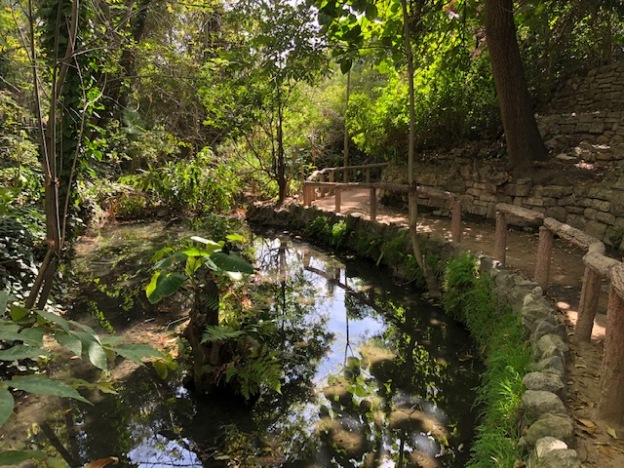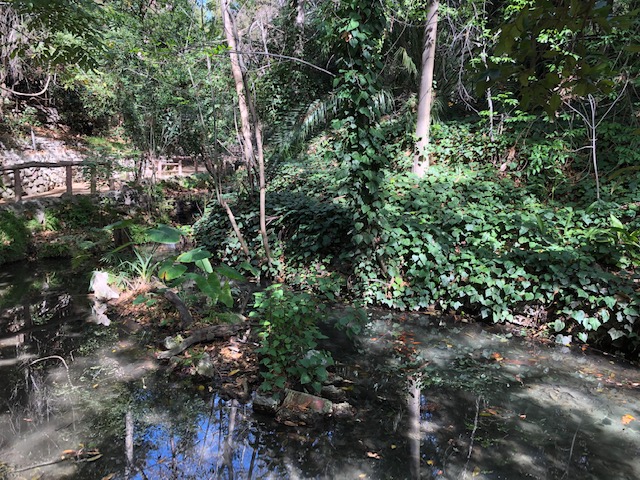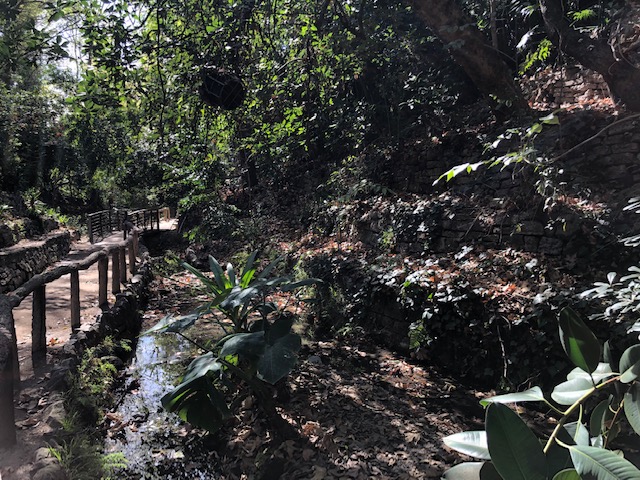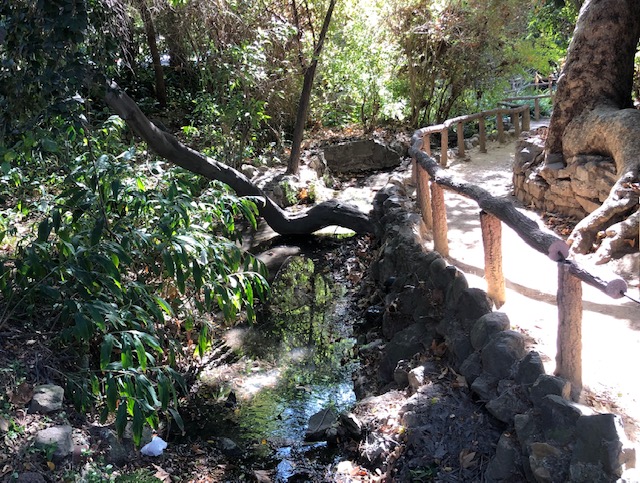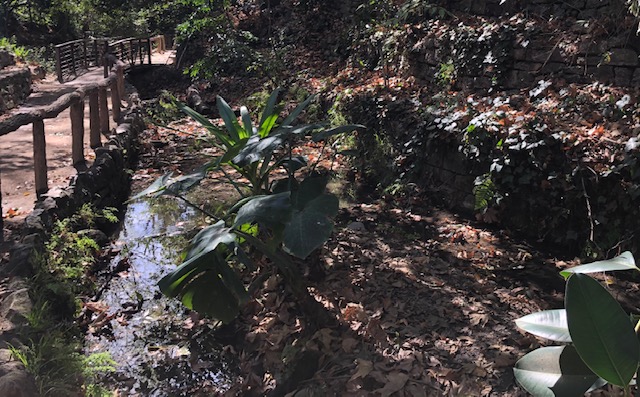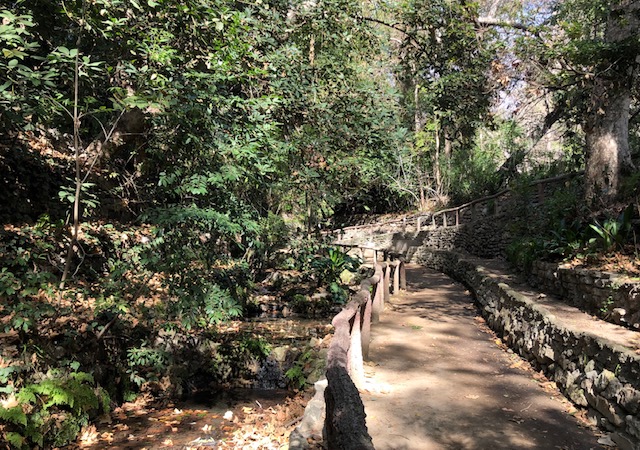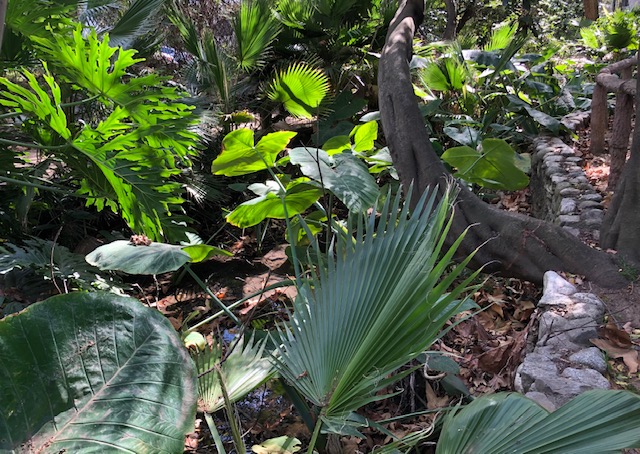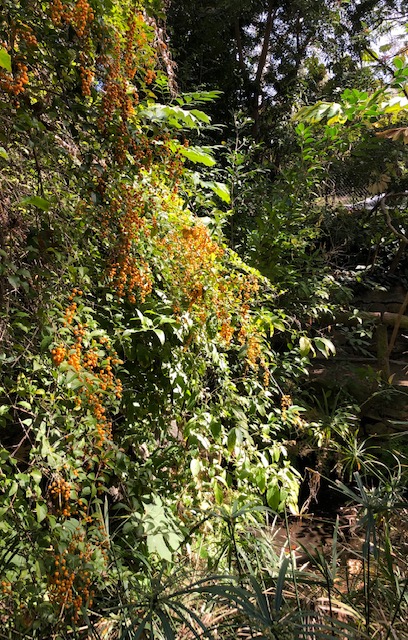Green is so soothing.
This gorgeous spring-fed canyon in the oak woodlands of Griffith Park was formerly the site of the Tongva village of Maungna; it was among the first, if not the first, rancheria to be “reduced” to the Mission at San Gabriel in 1777. That left the land free to grant to Cpl. Feliz and his family (“Los Feliz”) in 1795. This spring was probably a very valuable part of the rancho grant — for though the LA River flowed right past the ranch, that was the Pueblo’s water. Water tumbling down from Santa Monica Mountain springs would have been invaluable.
Between 1910 and 1920 Griffith Park Superintendent Frank Shearer gave the city this Olmstead-inspired half-mile meander along the creek, stunningly landscaped with native and exotic wonders. Decades of neglect have been reversed in the past two years. They’ve cleaned out the muck and leaf litter and crashed tree limbs of a century, which had made the place pretty wild. It has probably never looked this good, with everything all grown in and all the water flowing and clear.



